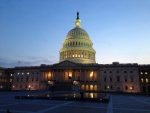Student Loan Repayment Matches in a 401(k) Plan – A New Wrinkle
Congress passed SECURE 2.0 allowing a new feature for 401(k), 403(b), and 457 plans that provide a matching contribution for their elective deferrals. For plan years beginning in 2024, this new optional opportunity is for the plan to treat Qualified Student Loan Payments (QSLPs) as if they were elective deferrals to the plan (even though they were not contributed to the plan) and to provide a matching contribution to the plan as if they were. Of course, this new wrinkle comes with a bevy of rules, recently issued by the IRS.
-
- A QSLP is a payment made by the employee during the current plan year in repayment of a student loan for higher education (think post K-12, iuncluding college, technical schools, and others) on behalf of the employee, the employee’s spouse, or dependents. But the employee must have been legally and contractually responsible for repayment of that loan. For example, if the employee is a cosigner on the loan on behalf of a child, they would be contractually required to repay the student loan.
- The amount of student loan repayments during the plan year to be treated for purposes of the QSLP must not exceed that year’s elective deferrals legal limit, reduced by any elective deferrals made to the plan. For 2024 that total amount is $23,000.
- To be eligible for a QSLP match, the student loan payment must be made during the same plan year.
- If the plan adopts the optional QSLP match, it must be made available to all employees who are eligible for an elective deferral match, and vice versa. However, if the plan excludes a qualified class of employees (e.g. collectively bargained employees) it can also exclude them from a QSLP match.
- QSLP matches are allowed on a different frequency than elective deferral matches as long as the frequency is not less than annual. For example, if the plan currently provides elective deferral matches each pay period, it could adopt the QSLP provisions and make those matches quarterly or annually.
- Employees must be able to self-certify that the loan repayment meets the requirements of a QSLP. However, the plan can require a certification upon each submission or even annually. The certification must include the following:
- A QSLP is a payment made by the employee during the current plan year in repayment of a student loan for higher education (think post K-12, iuncluding college, technical schools, and others) on behalf of the employee, the employee’s spouse, or dependents. But the employee must have been legally and contractually responsible for repayment of that loan. For example, if the employee is a cosigner on the loan on behalf of a child, they would be contractually required to repay the student loan.
-
-
- The amount of the loan payment;
- the date of the loan payment;
- that the payment was made by the employee;
- that the loan being repaid is a qualified education loan and was used to pay for qualified higher education expenses by the employee, the employee’s spouse, or the employee’s dependents; and
- that the loan was “incurred” by the employee, meaning that they are contractually responsible for the loan repayment.
-
An important note: the plan may choose to have the employee submit verification in support of the certification as long as that requirement is made upon adopted procedures of the plan and is applied uniformly.
-
- The plan can establish a schedule to submit QSLP match certifications, such as annual or quarterly submission deadlines, as long as the deadlines are “reasonable.”
- A QSLP match provision in the plan is subject to the same nondiscrimination testing as for elective deferrals. However, the plan can optionally establish testing procedures to separate those employees who make an elective deferral and those who utilize the QSLP.
- The plan can establish a schedule to submit QSLP match certifications, such as annual or quarterly submission deadlines, as long as the deadlines are “reasonable.”
So Who’s This For?
Employers who wish to recruit and retain workers likely to have student loans, such as recent college or technical school grads or younger professionals with large student loans are prime candidates to consider the new QSLPs.
You’ll want to speak with your TPA or benefits attorney about this wonderful new opportunity. It’s not for every plan sponsor, but there are many who will like having this additional option in their benefits toolkit.


